Autumn had scarcely gilded the sharp sunlight glaring down over the unshaded earth, an island of stone bordered by shrubs and short cedars. The flat gray ground resembled a forgotten parking lot where blacktop has paled over time and split into irregular fragments, clutching skinny plants in the cracks between. Patches of dry grass crowded into the spaces where stone had fragmented further into gravel. Endolithic lichens embroidered the surface with black speckles and beige spots. At the edge of the glade, brittle branches of blue-gray reindeer lichen lay piled on moss turned rusty brown by summer drought. Each branch of the reindeer lichen split at its apex, like a crown, into many short peaks, every one capped with dull, dark red.
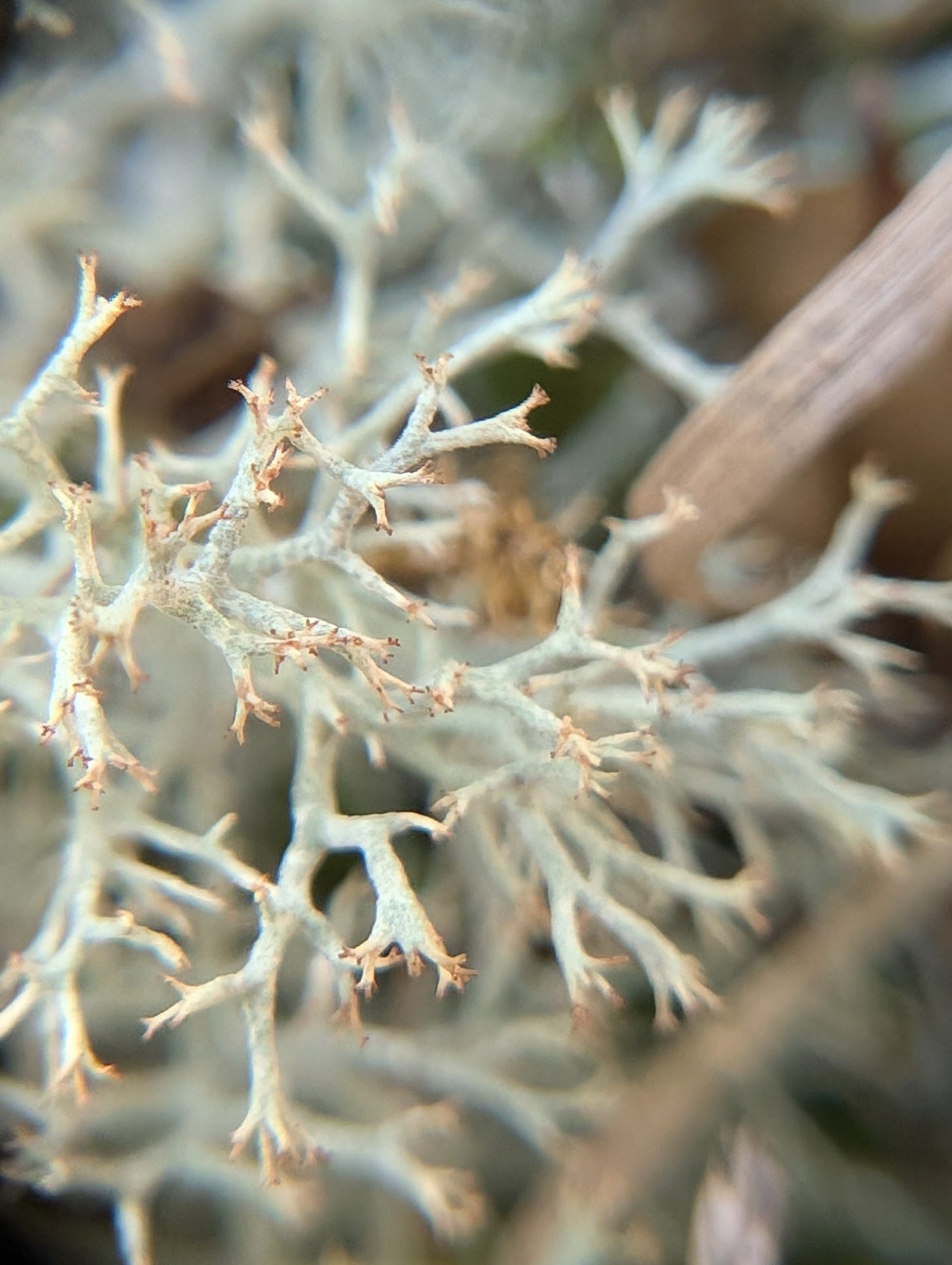
This barren space, an island of limestone in the midst of forest, is a cedar glade. Cedar glades are rare in Georgia, existing in only a few northwestern counties. The most accessible cedar glades are located at Chickamauga Battlefield, more than five thousand acres of national park that is part of the larger Chickamauga and Chattanooga National Military Park. Dedicated in 1895, it was the first park of its kind in the United States, preserving not only the historic site but also keeping the landscape undeveloped, gifting us with the rare and fragile cedar glades, intact more than a century later.
I lived in Georgia for nearly a decade without knowing the cedar glades existed. I learned about them from the book Favorite Wildflower Walks in Georgia by Carol and Hugh Nourse, a book that has introduced me to many of my favorite places since moving to Georgia in 2013. Somehow, I had overlooked the second walk highlighted by the book (six cedar glades at Chickamauga Battlefield) until the spring of 2022, while consulting the book to plan a wildflower adventure with my husband for my thirty-eighth birthday.
The description enchanted me — limestone bedrock with soil so shallow, or even nonexistent! — that no trees can grow, save stunted Eastern red cedars. The list of endemic plants intrigued me — least glade cress, purple-tassels, Nashville breadroot, glade St. John's wort, Great Plains ladies' tresses, Eggleston's violet — species I had never heard of before, let alone seen.
But when the morning of April 9, 2022 arrived, so did the Birthday Sads. Sometime after breakfast, they fell upon me like a dark, heavy blanket dropping onto my shoulders and wrapping around me — a persistent yet irrational sadness that affects me every April for at least a short time. I took that blanket of illogical melancholy and declared I was going back to bed, a pronouncement that baffled my husband. He kindly stated that he would go with me wherever I wanted to go whenever I was ready.
It was my first birthday since being diagnosed, in October 2021, with Autism Spectrum Disorder. It was my first birthday with a new identity, an understanding of who I had been all of this time but would also continue to be. I will never stop being autistic. A late diagnosis carries with it a wave of relief, a sudden understanding of many truths; pieces of the past cease to wander, spiral, and float as if lost; they fall to earth, landing in their proper places, fitting neatly together like a puzzle, and the final image that they form is a map. Yet the companion of that relief is grief, like the shadowed cracks between those pieces; the map is a guide for navigating the world and one’s own mind, but it reveals circuitous roads, uneven terrain, obstacles, and roadblocks. The autism diagnosis is a final proclamation that some of a person’s traits will not change. I will never stop being autistic. I will never fix what is atypical about me. I can only adapt to an inaccessible world, and where I cannot adapt, I will struggle.
The cedar glades’ unique geology — limestone — and soil chemistry — high levels of calcium and consequent high pH — produced the glades’ unique botany. Plants have adapted to extremes in both temperature and moisture; the lime barrens bake in summer and, in winter, collect water. The chill, solid stone does not easily drain. Plants must tolerate waterlogged roots well into spring, until summer returns and burns the pools away.
On April 9, 2022 (having shed the Birthday Sads and finally made our way northwest), my husband and I followed a wooded trail that led to open glade — an expanse of stone the color of an overcast day, with shimmering blue mirrors of the sky created by shallow pools. Delicate leaves of least glade cress (Leavenworthia exigua var. exigua) floated on the water’s surface. Diminutive white flowers fluttered from thread-like stems — Pitcher’s stitchwort, Mononeuria patula, a relative of the sandworts found on Piedmont granite outcrops and in the sandhills further south (Piedmont sandwort, Mononeuria uniflora, and Pine-barren sandwort, Mononeuria caroliniana, respectively).
When I returned to the cedar glades this October, I had a mission: to find lifers. Last week, I wrote about finding awe (and lifers) in everyday places, but sometimes I seek out unusual places with a specific goal to find and photograph one or more species that I have never seen before. I plan these trips strategically. I research. I make lists. I download screenshots to my phone. I save GPS coordinates to Google Maps. I map out a route in an attempt to maximize the lifers I may see. Several times a year, I learn about even more plants present at the cedar glades that I have never heard of, and so my trips to Chickamauga Battlefield turn into deliberate quests.
This may seem like a strange way to spend a day off — turning a hike into homework. Sometimes, in the midst of these quests, I pause and ask myself, “Is this fun?” The past three years have taught me, however, that my fun may not look like what a lot of people consider fun.
Autistic people have interest-based nervous systems.1 In the words of the DSM-V, many of us have “highly restricted, fixated interests that are abnormal in intensity or focus.” Some describe our minds as “monotropic,” focusing on one or few things but with great intensity. Terms like “special interest” or “hyperfocus” refer to the topics an autistic person regards with such enthusiasm. While the DSM-V pathologizes them, special interests are a source of joy. Obviously, nature is one of mine.
My mind treats this interest — nature — as a series of interlocking systems. I periodically focus on specific taxa — a genus or family — to experience in the wild. In truth, I want to see them all, because each species or place or experience informs my understanding of the greater whole. Thus, finding a new species, a lifer, is not about accumulating points or checking an item off a list. To know the species, not from a picture alone, but to see it with my eyes, share space with it, walk the ground from which it grows, and observe the fauna that interact with it — this gives me numerous pieces of information to fill in missing spaces in my mind’s database. It makes the system in my mind more functional. Thus, to truly understand the genus Asclepias, for example, I try to see as many Asclepias species in the wild as I can.
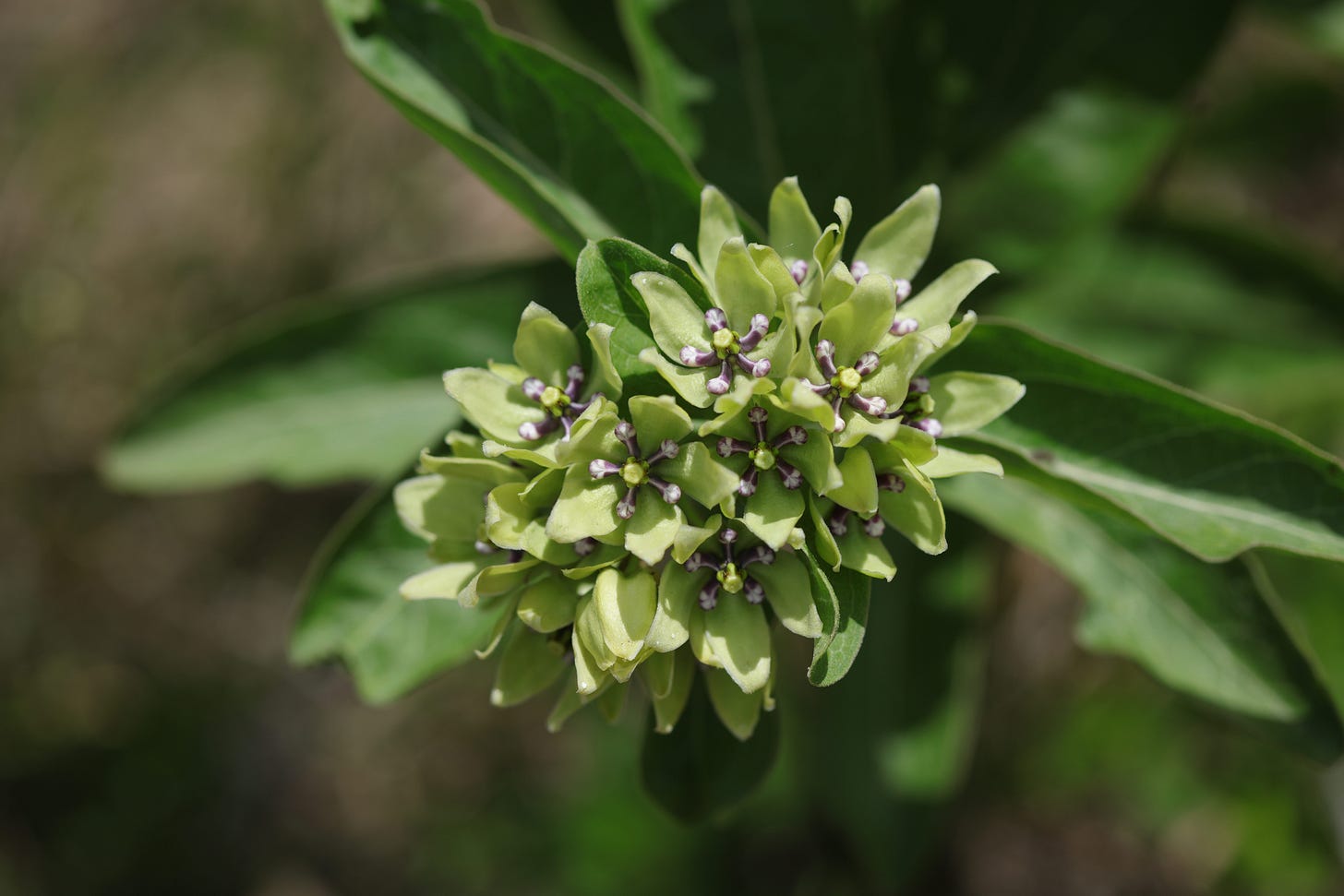
In carrying out these quests, I explore new places, including some I may have overlooked, I find unexpected plants and insects, I make unplanned discoveries, I learn, and I have fun, even if I didn’t find the “target” lifer. And these quests inevitably lead to more research, more goals, and future quests.
During my recent October trip to Chickamauga Battlefield, I was searching for Symphyotrichum kentuckiense, Kentucky aster, a glade specialist. Symphyotrichum is a large genus of plants formerly grouped into the genus Aster. Most are challenging to identify to species, relying on minute details and sometimes measuring. Many require keying — going through the couplets of a dichotomous key. (Imagine a flowchart, but only text, with two options, such as: “Leaves opposite or Leaves alternate. If opposite, proceed to step 2. If alternate, proceed to step 5.”) I find dichotomous keys confusing and overwhelming, particularly if I can find any ambiguity in the two options presented. I understand that my aversion to keys makes me a botanical heretic. I understand why keys are necessary.
Like many autistic people, I am a bottom-up learner. I learn backwards; when I was in school, the best way for me to understand how to solve an equation was to see the answer the first time, work through the procedure backwards, and from there, I could apply that to unsolved problems. Similarly, I learn to identify species by seeing the whole and creating a mental map of the parts. Seeing photos and reading an entire species description helps, but observing the species in the wild is even better. (I imagine plenty of autistic people don’t share my feelings about dichotomous keys. Perhaps if I work through a few keys backwards, they’ll make sense to me.)
Some Symphyotrichum are so distinct that they can be identified by sight alone, and every autumn I try to add a new one to my life list. Symphyotrichum kentuckiense has narrow, spiky phyllaries (tiny, specialized leaves at the base of the flower head) with their margins (edges) rolled inward, blue-violet ray flowers,2 and narrow, spiky, grass-like leaves. Also, they grow in lime barrens.
Once I see a species in the wild, it is fixed in my mind; I will recognize it in the future and perhaps apply the information to noticing and identifying other species. Otherwise, it may be lost to me in an overwhelming world of detail, or I second guess my identification: is this really the thing I saw a photo of? This is why I save GPS coordinates to my phone and sometimes seek out the exact plant that another person photographed. It is like looking in the back of the textbook for the answer to an equation, in order to understand the steps to solving it. Learning backwards.
Thus my search for Symphyotrichum kentuckiense took me to Glade 6.
During our first visit to the cedar glades, my husband and I began with Glade 6 after following a road lined with bright orange hoary puccoon (Lithospermum canescens) and neon pink hairy phlox (Phlox amoena), then walked up a wooded hill, passing a large, lime green patch of widow’s cross (Sedum pulchellum). We emerged from the forest at the top of the hill, facing a large cedar glade — grasses waving over pale stone ringed with cedars and fragrant sumac (Rhus aromatica). Just a few plum-colored flowers rose from among the grass — Nashville breadroot (Pediomelum subacaule), the prize, the plant I had most hoped to see that afternoon. This rare legume has compound leaves like lupine, with long, pointed leaflets arrange in a circle. Like lupine, its flowers stand on a single stalk, a striking column of blooms. Where lupine is bright, Nashville breadroot is a deep, dark purple, like lupine’s shadow.
Traveling to Glade 6 this October, I passed various goldenrods, asters, and crotons (plants in the spurge family covered in soft hairs, an adaptation that increases surface area and provides insulation.) I passed wavy-leaved aster, Symphyotrichum undulatum, my lifer aster of autumn 2022, which I found for the first time on this very road, leading me to recognize it again and again, throughout the North Georgia mountains. Wavy-leaved aster is distinct, recognizable without a key, because of its spoon-shaped leaves with bases that clasp the plant’s stem.
Walking up the same wooded hill, I returned to Glade 6 and found my prize — blue-violet blooms among the dry grass, skinny leaves like grass themselves, over stone the color of cloud. I had found the Kentucky asters.
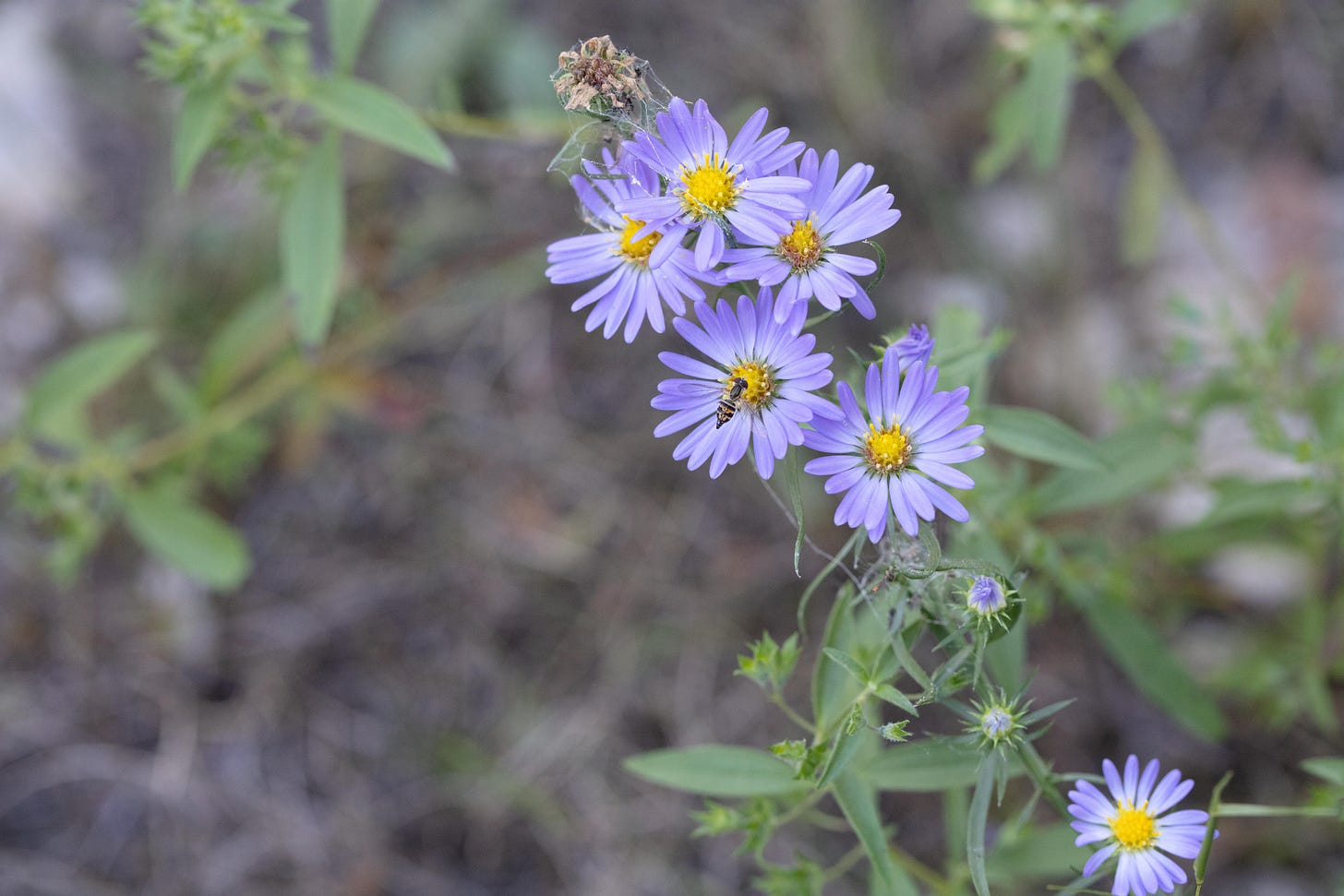
Nature and my intense fascination with it, my systematic approach to a hobby, and my drive to find and document all of the species, brought me here — to the realization that I am atypical. Nature delighted and intrigued me when I was a weird kid. Nature inspired adventures that sustained me as a confused, heavily masking adult teetering on the edge of burnout. Even now, three years post-diagnosis, it sustains me in an overwhelming, loud, inaccessible world — like a bright island in the midst of a dark, crowded forest.
A caveat — as the saying goes, if you have met one autistic person, you have met one autistic person. Autism manifests in various ways; most of us have a mix of autistic traits to varying degrees; some traits may be totally absent. With these generalizations, I do not attempt to speak for every autistic person.
Further, a note about language. Some believe it is impolite and downright ableist to refer to us as “autistic people” instead of “people with autism.” However, various literature suggests that most of us prefer identity-first language, as do I. This is an essay itself, so rather than elaborate here, I link to the following: The Significance of Semantics: Person-First Language and Why it Matters by Lydia X. Z. Brown and Botha, et al., “Does Language Matter? Identity-First Versus Person-First Language Use in Autism Research: A Response to Vivanti.” J Autism Dev Disord. 2021 Jan 20;53(2):870–878.
Like the boneset I wrote about previously, Symphyotrichum is in the family Asteraceae; each inflorescence is a capitulum (head) of many tiny, tubular disc flowers (the center) surrounded by ray flowers (which look like petals.)




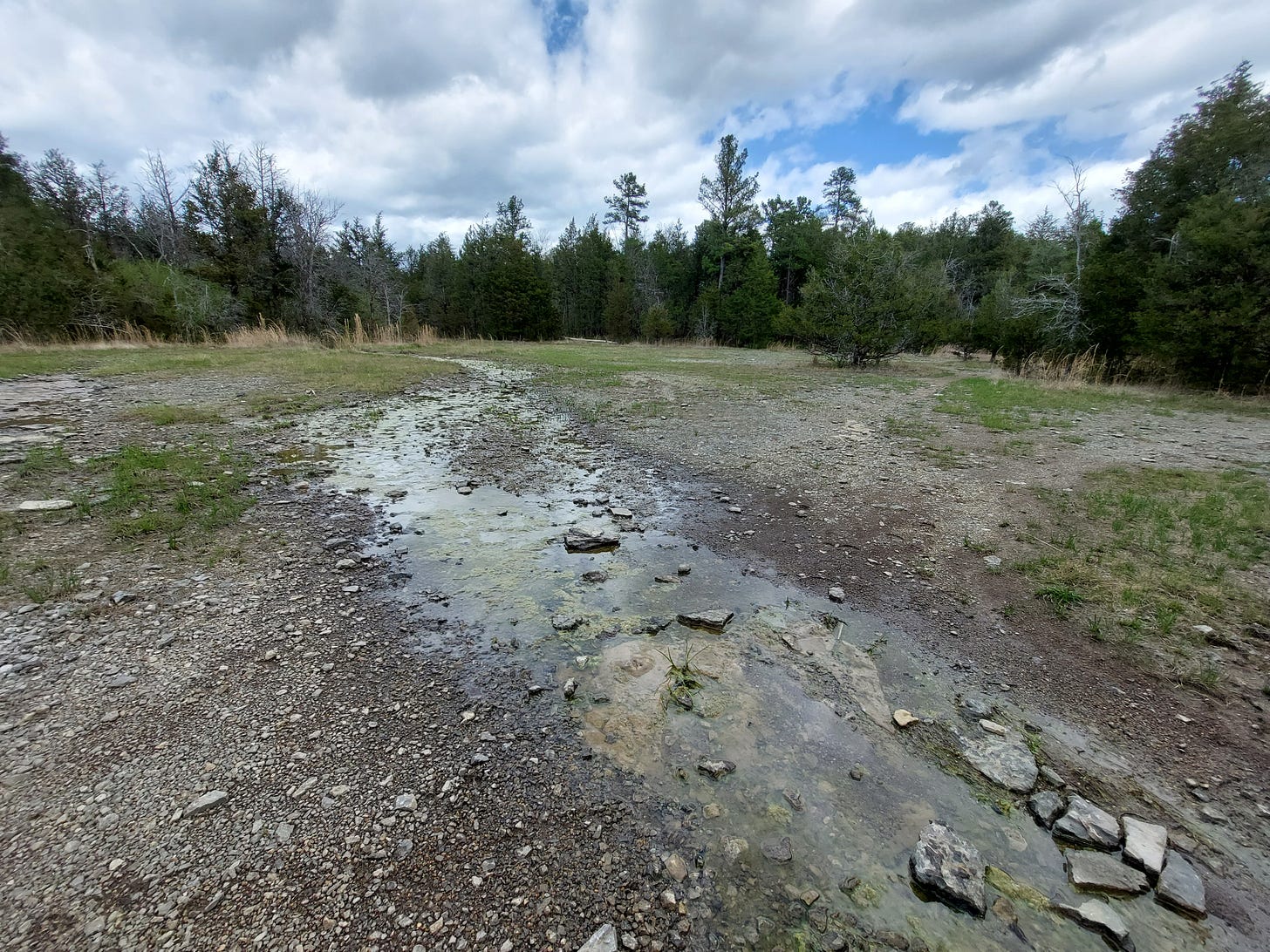

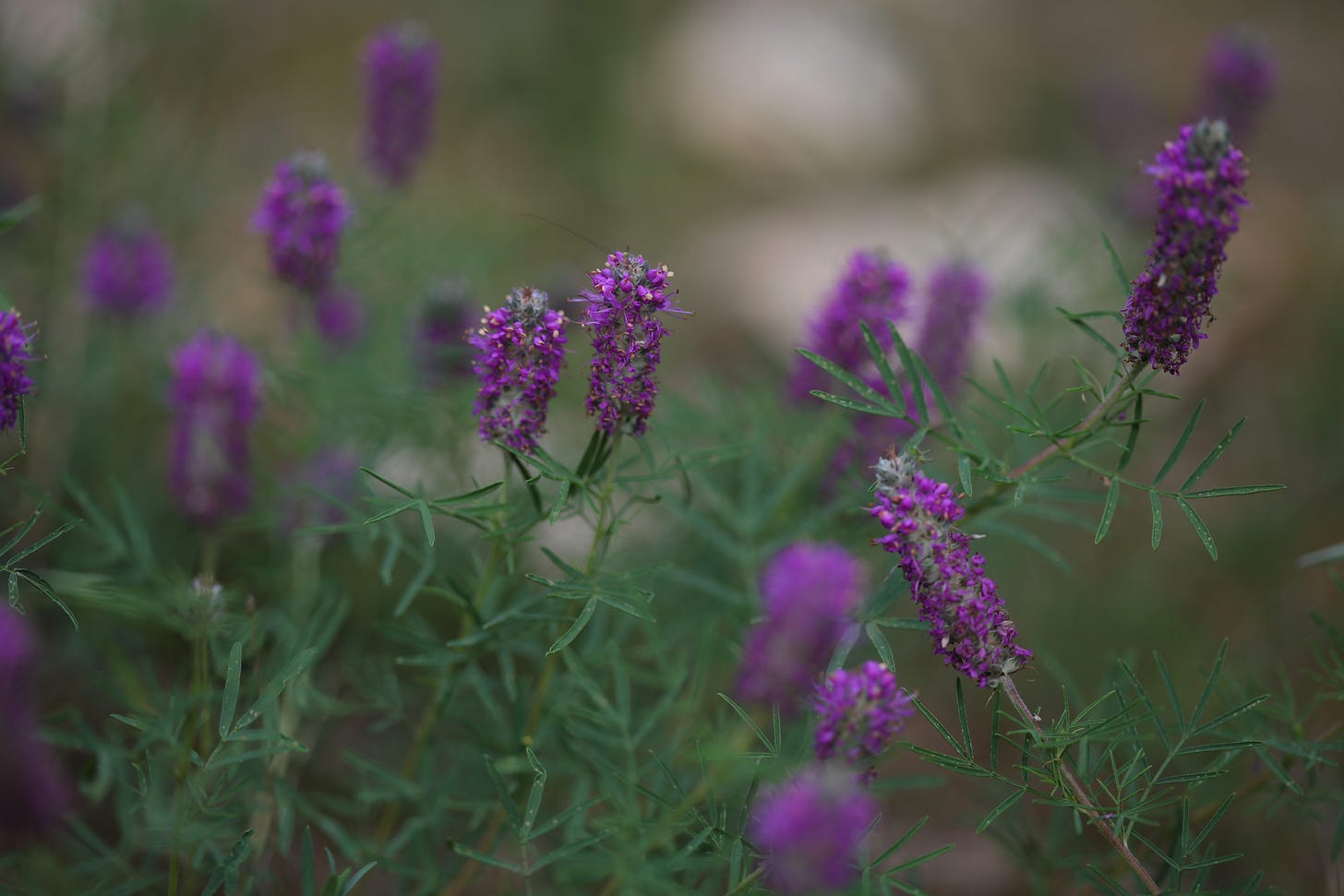
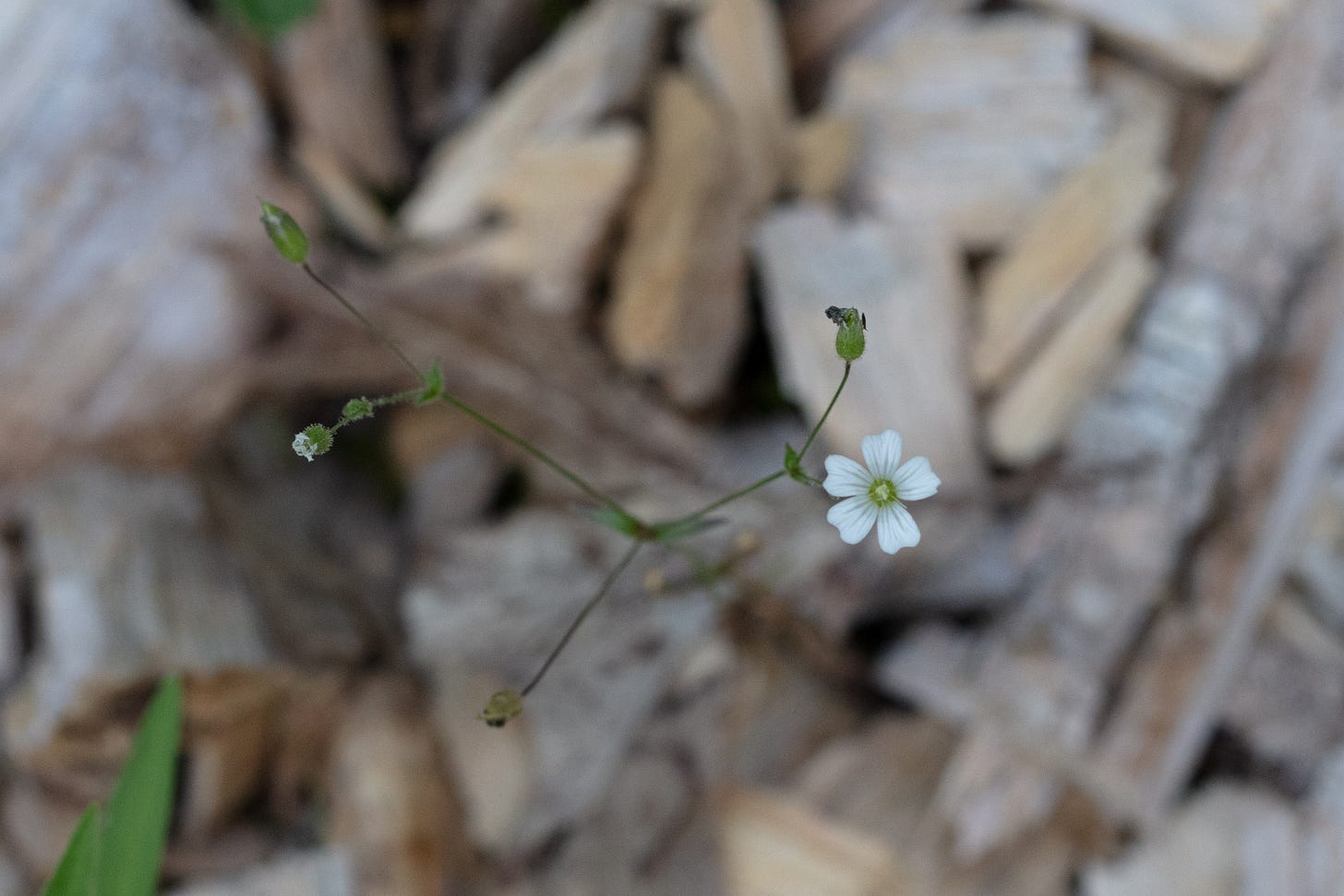
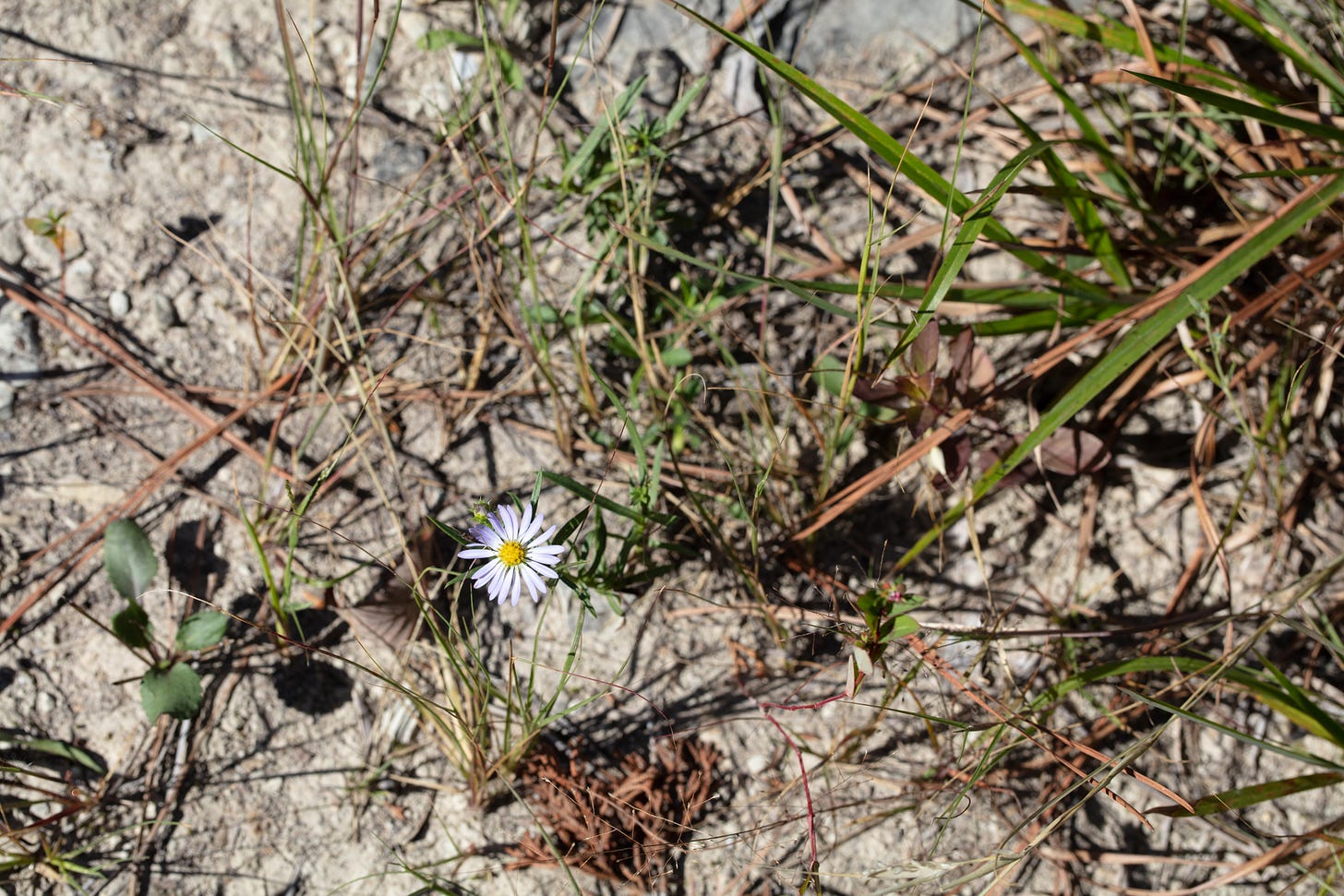
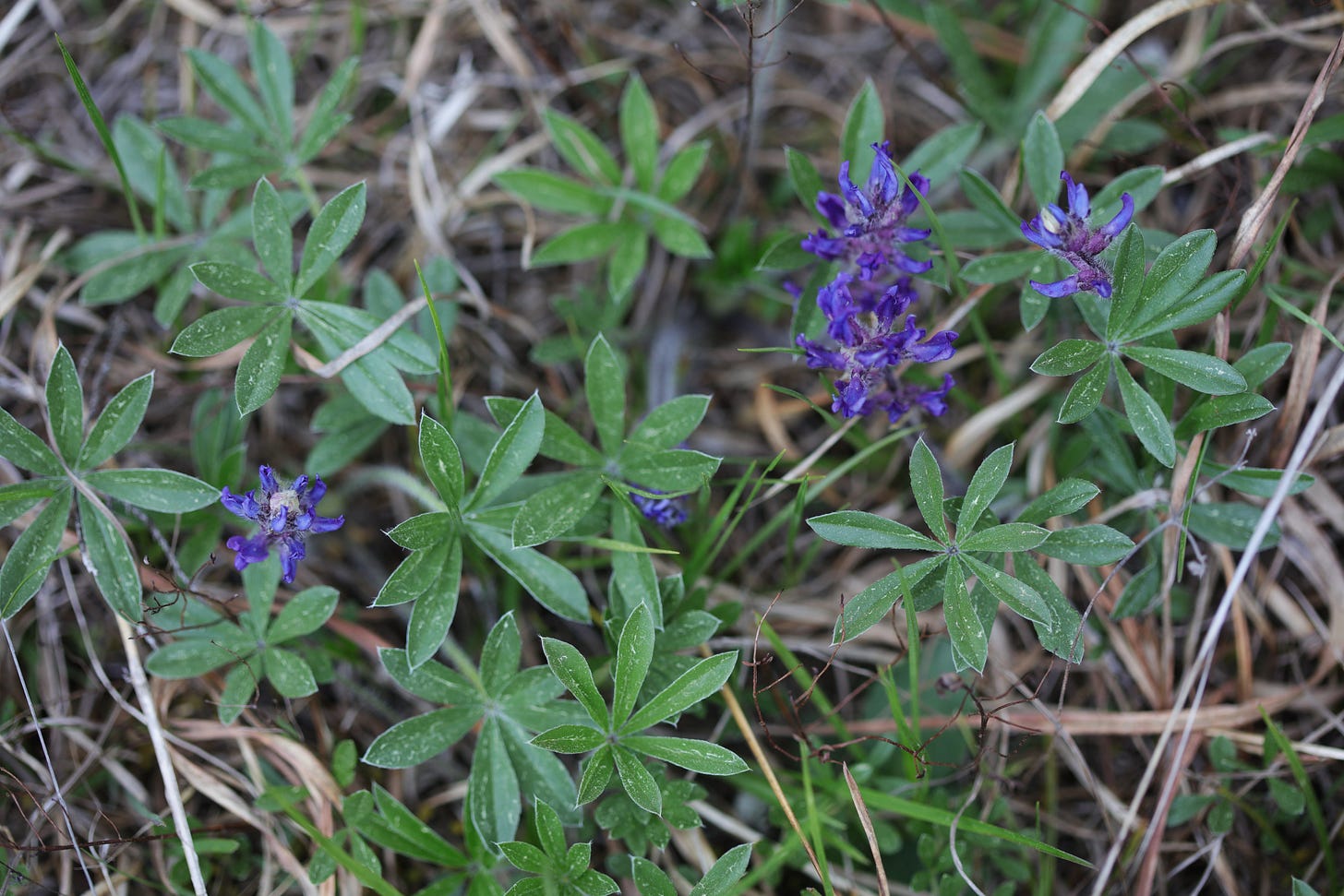
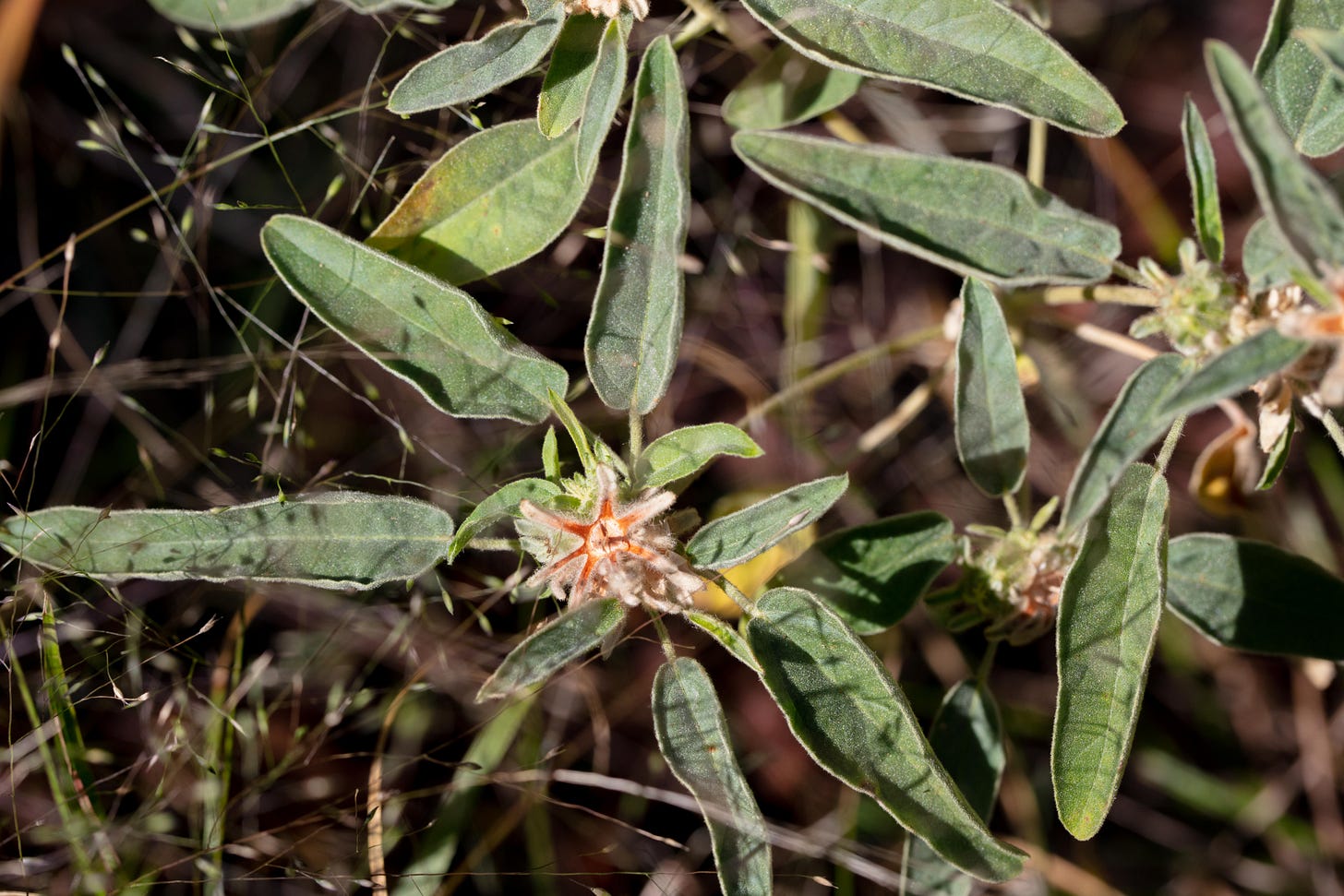
Beautiful, in every conceivable way! All of this and what you have written.
Lovely read. Thanks for sharing. The birthday sads are so relatable and I too avoid dichotomous keys. lol.